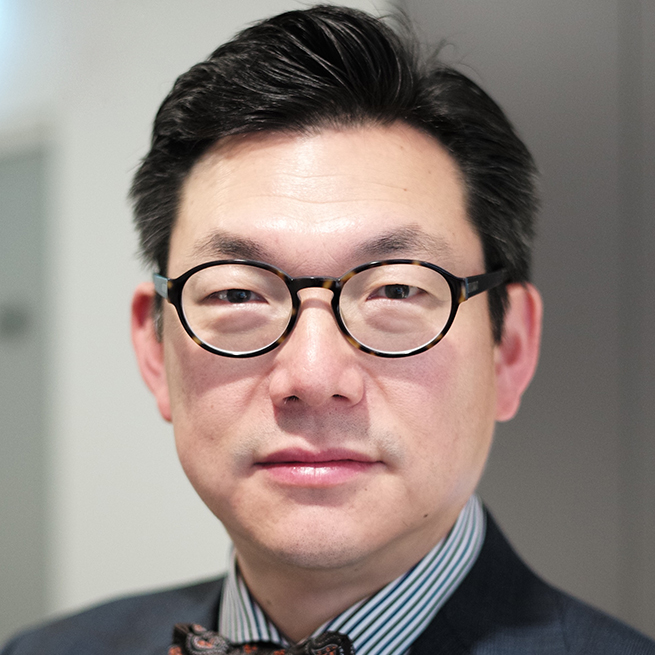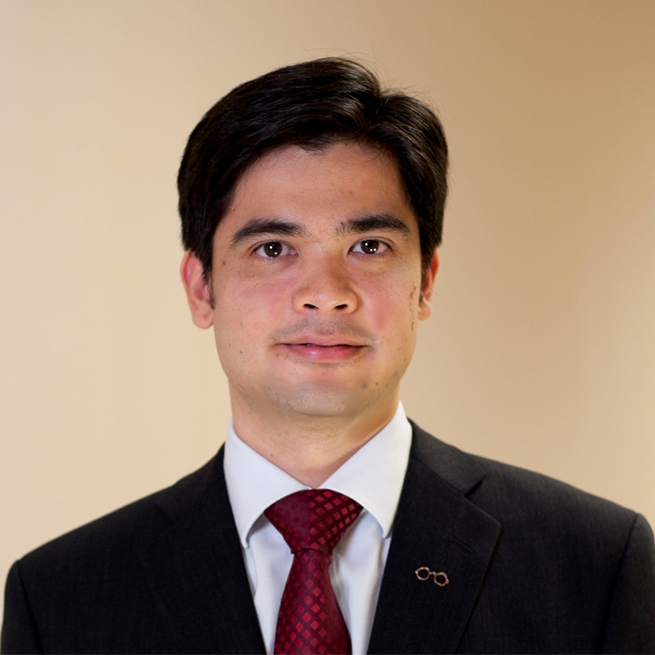This is your captain speaking. Kindly look out your passenger-side window, and let me be the first to welcome you to PIE-LAND . . . a remote retinal island, discovered originally by the staff of PIE Magazine. In about 20 minutes, we’ll be doing a hard landing on PIE-LAND with surgical precision. Today’s weather includes a sprinkling of the anterior segment, and at the current time it’s unclear on how interconnected it remains to the posterior segment. Passengers not on connecting PIE-AIR flights, if this is your final destination, be advised: watch – but do not touch – the mysterious retina creatures on PIE-LAND at ARVO Booth #1631.
Before disembarking, we asked ophthalmologists to consider if the posterior segment is an island to itself . . . or if it interacts with the anterior segment, the brain, (and perhaps other parts of the body) too? As we descend, and on behalf of eyeballs everywhere, we thank the doctors who answered these questions and look forward to seeing their input in the flight report below.
It’s an ophthalmic tale as old as time: The posterior is the posterior and the anterior is the anterior, and never the twain shall meet – except when they do. On occasion, anterior issues overflow into the posterior and vice versa. So, what’s an ophthalmologist trained in a specific subspecialty to do? Are the segments totally separate (like the retinas on remote PIE-LAND), or are they interconnected?
To help explain the connection between the segments, vitreoretinal ophthalmologist and surgeon Dr. Andrew Chang, provided the following analogy: “The eye is a house and there are different rooms in the house which serve different purposes. Each room shares the same materials in construction – therefore, disease processes that affect the material will affect multiple rooms. Surgery or renovating one room may result in changes in an adjacent room. Each room is interconnected with electrical, plumbing and data cabling.” With that analogy it appears
that the two segments are both interconnected and separate. Beyond being two parts of the same organ, how are they connected? And in the same vein, is it just physiology that separates them or is it something else?
Let’s begin with the physiology. The combination of the segments allows for the detection of light, but the visual pathway is not limited to just the eye – it’s only one part. “The eye/globe is an end-organ that detects light. The electrical impulses are modulated and interpreted with complex post-processing by the brain. This is perceived as vision,” explained Dr. Chang.
Further, there are similar anatomic “materials” in the front and back of the eye. “Embryologic development of the eye results in pigmented layers in the anterior and posterior segments, like the uveal tract which is affected by the same disease processes,” he said.
In addition, Dr. Chang notes that the same disease processes such as inflammation, trauma, neoplastic, inherited and metabolic disorders affect different parts of the eye. “These may produce different manifestations depending on the part of the eye affected and they may impact each other.” He cites several examples of this: trauma in the anterior segment causes bleeding and damage that may affect the posterior segment; glaucoma may cause damage to the fluid drainage channels which could then affect
the optic nerve; and uveitis produces different manifestations depending on which part of the uveal tract is involved. In addition, the surgeries themselves can create problems in the opposite segment. Surgery originating in the anterior can cause posterior issues like dislocated lens, endophthalmitis and macular swelling. Meanwhile, posterior surgeries can cause anterior problems like cataract and glaucoma.
However, though some disorders and surgical techniques create a bridge connecting the segments, they still remain in decidedly different “rooms” in the “house.” Dr. Chang explains some the differences. “Anatomy between the segments is different – and this gives rise to different issues, as pathologic diseases manifest uniquely between the front and back. Symptoms relating to problems in the segments differ. Examination findings are different. Different diagnostic tools are used to examine the anatomic structures. Surgery is based on anatomy and therefore approaches must be different.” He notes one caveat to all these differences: “Medical treatments such as anti-VEGF injections or steroids address similar pathologic process in different parts of the eye.”
Are these differences big enough to keep the posterior segment on an island all its own? Or are we getting closer to building a bridge to connect the segments?
Connecting the segments through sub-specialties
Perhaps one way to bridge the gap is to connect the sub-specialties. Dr. Manish Nagpal acknowledges that while the sub-specialties deal with specifics, there can be an overlap of sorts regardless if it’s a retinal, corneal, cataract or neurological issue.
“When we treat patients for various retinal pathologies, over time, some of these patients develop glaucoma, cataracts or corneal problems as a sequalae of various intravitreal injections or surgical procedures,” he said. “Now, the same eye needs the expertise of two or three sub-specialties for treatment. If a child has retinopathy of prematurity (ROP), more often it is treated by a retinal surgeon rather that a pediatric ophthalmologist – even though it may have been diagnosed by the latter.” He adds that there are also neurological conditions that are diagnosed by retina specialists. For example: “On examination it’s noted that there’s a disk oedema or retrobulbar neuritis – and sometimes a tumor is detected when we send the patient for an MRI.”
Dr. Nagpal says that the specialties are constantly overlapping – and that’s best for the patient, otherwise, the patient may not receive the best possible treatment.
This talk of sub-specialization brings us to an important point – the training and practice of ophthalmology was traditionally based in sub-specialization, which according to Dr. Augustinus Laude, may be defined by anatomy, like anterior and vitreoretina. He says there is also a related issue regarding the acceptance amongst the professionals and licensing privileges (and medical practice insurance coverage) of doing certain surgical procedures (i.e. pars-plana vitrectomy and laser refractive surgery). However, as today’s technology creates innovative breakthroughs, it is possible that this “school of thought” – or training and regulation processes – can change as well. According to Dr. Laude, he sees the impact of emergent technology disrupting this model.
“For example, the introduction of MIGS surgery, specifically for models such as the iSTENT (Glaukos), which is designed to be done during cataract surgery without the need for post-operative bleb management, may encourage non-glaucoma specialists to include them in the armamentarium for management of patients with cataract and glaucoma or ocular hypertension,” he said. “In addition, advances in femtosecond laser assisted cataract surgery may reduce the need to refer the cases on to surgeons who are fellowship-trained in managing complex cataracts.”
Is computer-assisted diagnosis the wave of the future?
Dr. Laude notes that advances in computer algorithms to OCT image analysis (with automated segmentation) greatly help with interpretation and diagnosis. “We anticipate that further advances of OCT-angiography may make this non-invasive imaging tool more accessible for ophthalmologists who are not fellowship-trained in medical retina or vitreoretina to diagnose and manage patients with maculopathies.”
And while fundus imaging is an ideal way to screen eyes (it’s simple, non-invasive and cost-effective), it’s also time-consuming and challenging to manually evaluate the images.
However, new computer-assisted technology has recently been researched and proposed. These advances will not only aid in diagnosis, but their benefits will be felt beyond the ophthalmic field. Dr. Laude explains: “Artificial intelligence (AI) and computer-aided diagnosis (CAD) is being actively explored for fundus image processing to be used by non-ophthalmologists in screening for eye diseases early for timely intervention and management.”
This means that general practitioners could potentially diagnose an ophthalmic condition – or an ophthalmologist specializing in the anterior could diagnose a condition in the posterior. This is key as diseases like age-related macular degeneration (AMD), diabetic retinopathy (DR), and glaucoma may lead to irreversible vision loss if left untreated. Researchers expect these new tools to especially provide assistance to doctors in developing countries and rural areas, where patients may not have access to specialized care. Several studies have analyzed the results of AI and CAD in patient diagnosis with favorable results.
A recent study conducted by Dr. Laude and colleagues proposed an original approach to automated eye screening. The authors state: “It is an innovative approach, and the first work to the best of our knowledge proposed to assist the ophthalmologists in making an accurate diagnosis of the various eye conditions by providing an adjunct tool.” They proposed an objective and novel algorithm using the pyramid histogram of visual words (PHOW) and Fisher vectors for the classification of fundus images into their respective eye conditions (normal, AMD, DR and glaucoma).
The proposed algorithm extracts features which are represented as words. These features are built and encoded into a Fisher vector for classification using random forest classifier. This proposed algorithm is validated with both blindfold and ten-fold cross-validation techniques. An accuracy of 90.06% is achieved with the blindfold method, and highest accuracy of 96.79% is obtained with ten-fold cross-validation.1
These results led the authors to conclude: “The highest classification performance of our system shows the potential of deploying it in polyclinics to assist healthcare professionals in their initial diagnosis of the eye. Our developed system can reduce the workload of ophthalmologists significantly.”
“Our proposed CAD system can be placed in third world countries and remote villages where the healthcare services are limited. Additionally, the proposed CAD eye system can be used to conduct a mass eye screening session for the elderly as an early detection of any eye abnormality,” stated the authors. “The performance of the system can be further improved by taking more diverse images in each class. Also, our proposed technique can be used to detect other eye diseases like diabetes maculopathy, floaters, retinal detachment and macular hole.”
Should these developments be approved for clinical use, they could certainly revolutionize the way patients are diagnosed and treated. In addition, their use would allow a general doctor or ophthalmologist to screen patients and then refer as needed to a practitioner in the necessary sub-specialty – potentially saving sight for those in the beginning stages of disease. From this, we can extrapolate, that technological advances like these will almost certainly help to connect the segments, the sub-specialties, and even ophthalmologists to primary care physicians.
Reference:
1 Koh JEW, Ng EYK, Bhandary SV, et al. Automated retinal health diagnosis using pyramid histogram of visual words and Fisher vector techniques. Comput Biol Med. 2018;92:204-209.
Ahem. This is your captain again. We have landed on PIE-LAND. Our radar continues to show a smattering of blips on the screen that both connect and separate the posterior from the anterior and brain. Our current technology indicates that upgrades will be coming soon, which will allow your flight crew to better serve you. Please use caution when opening the overhead bins, as ideas may have shifted during the flight. We hope you have enjoyed this PIE-AIR Flight, and again, let us be the first to welcome you to PIE-LAND at ARVO Booth #1631.







